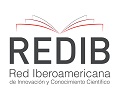Relatos, memorias y ficcionalizaciones en el arte: Dos intrigas intermediales (o de la letra a la pantalla y viceversa)
Versión escrita de ponencia presentada oralmente en el II Coloquio Interdisciplinario de Estudios de Cine y Audiovisual Latinoamericano (Montevideo, 2016) y el I Congreso Internacional Acercamien- tos Interartísticos em el arte y la literatura em América Latina (Morelos, México, 2016).
DOI:
https://doi.org/10.14409/culturas.v0i13.8608Keywords:
cinema, literature, Press, Brazil 1920–1930Abstract
This article discusses two intermedial plots that happened in Brazil during the 1920s and 1930s, in order to examine the interferences and dialogues between writing and image. The first plot is starred by Eugenio Pignone, who arrives to San Pablo in 1921 and soon after becames the subject of a series of articles published in newspapers. His adventures mobilize files that come from the feuilleton, which updates in the press an «phantomatique-ghostly» imaginary associated to literature and cinema. Pignone reappears years after as Eugenio Kerrigan, supposed Italo–American director with experience in
the Vitagraph and Paramount studios. He makes five movies. The remains of this production allows for the postulation of points of contact between the adventures of Pignone and the filmography of Kerrigan. The second plot is starred by Olympio Guilherme, who in 1927 won a contest by Fox Pictures and moved to Los Angeles with the expectation of becoming a movie star. He sends cinematographic critiques and personal impressions for the Cinearte magazine. In 1929, after repeated failures, he shot a film called Fome. He returns to Brazil in 1930 and two years later he publishes Hollywood, novela da vida real, a text in which the «miserable photographer» portrays the gears of the Hollywood machinery. The book proposes a reading contract by which we are confronted with a writing that should be read /seen as a film.






